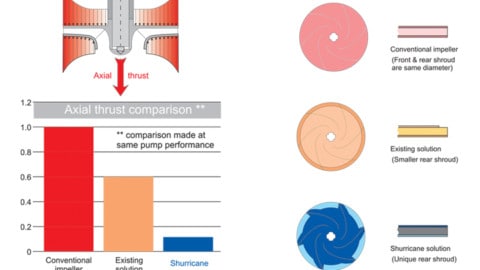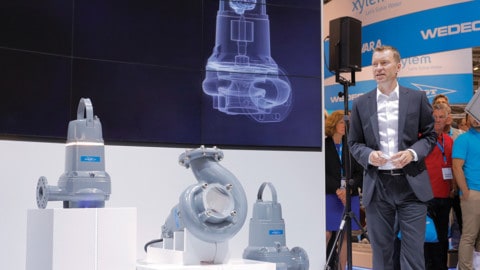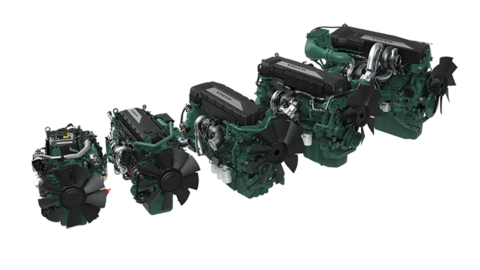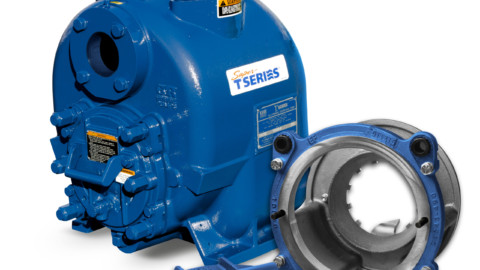The generation of fresh ideas, the need for progress and the ongoing development of products has never been more important for manufacturers in the Australian pump industry. Here, we take a look at some of the benefits Australian manufacturers enjoy by continually focusing on a paradigm of innovation.

Crusader Hose Managing Director, Francois Steverlynck (left) and Production Manager Huseyin Ates (right) with Shirley Campbell, Assistant Program Manager, AusIndustry.
The global economy is changing. New technologies and smart companies lead. New industries and new sources of wealth are emerging. New skills are required for workers at all levels. Australians must decide whether we will be at the forefront of these changes or be left behind.
This is the current message from the Federal Government, which has adopted a strongly pro-innovation stance. There’s a particular emphasis on science, technology, engineering and mathematics (STEM), which as a group have been defined as the building blocks for Australia’s future.
It has been estimated that more than half of today’s jobs will not be in existence by 2050 – these roles will be superseded, with service based jobs becoming increasingly obsolete. The jobs of the future will be knowledge based, geared towards solving the problems the global population will face, such as climate change.
The Federal Government promotes innovation in Australian businesses through its R&D Tax Incentive program, a targeted, generous and easy to access entitlement program that helps businesses offset some of the costs of doing R&D.
The program aims to help more businesses do R&D and innovate. It is a broad-based entitlement program. This means that it is open to firms of all sizes in all sectors who are conducting eligible R&D.
Benefiting the pump industry
Australian pump industry manufacturers can enjoy the benefits this grant program offers. One company which has done so is Crusader Hose, a manufacturer of flat lay hoses and associated equipment.
The importance of innovation is well understood by Crusader Hose Managing Director, Francois Steverlynck. In its 30-year history, the company has consistently focused on customisation, and has invested in R&D to continually improve the products it brings to market.
“Over the years we’ve always invested in the continual development of our products, and as we celebrate our 30th anniversary this year, this has culminated in the opening of an Innovation Centre at our head office in Victoria.
“We’ve been able to open this new facility thanks in part to the generous support of the Federal Government through the R&D Tax Incentive program.
“At the new facility, we’ll be focusing on analysing hose developments in a laboratory type environment, using equipment such as tensile testers, microscopes and abrasion testers. These are all requirements from our client base to improve and develop our layflat hose characteristics.”
The new facility was opened earlier this year at an event attended by more than 100 people, including AusIndustry’s Assistant Program Manager for Business Services, Shirley Campbell, and State Government Member for Bayswater, The Honorable Heidi Victoria MP.
“The success of our company has really been built on the back of a culture of innovation,” said Mr Steverlynck. “As STEM disciplines become more and more important for Australian businesses – especially for manufacturers in the pump industry – this will continue to be the case. The importance of listening to one’s customers, then acting on their needs, will apply more than ever.”
Businesses in the pump industry have a choice. We can’t afford to be complacent in the years ahead – the global market is at a critical stage in its development, and we are now facing a reality where companies must innovate or be left behind, particularly due to the competition from our competitors in the Asian region.
But if we keep on innovating now, keeping abreast of worldwide standards, an exciting and successful future can be obtained.
R&D Tax Incentive Program
The R&D Tax Incentive provides a targeted tax offset to encourage more companies to engage in research and development. It has two core components: a 45 per cent refundable tax offset for eligible entities with a turnover of less than $20 million per annum, provided they are not controlled by income tax exempt entities; and a non-refundable 40 per cent tax offset for all other eligible entities.
Unused non-refundable offset amounts may be able to be carried forward to future income years.
For more information go to www.business.gov.au.















